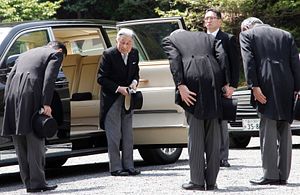The emperor of Japan has no formal political authority according to the constitution, and there is a strong consensus among Japanese that the emperor must not be involved in politics. But the red line separating the political from the apolitical can be amorphous. It is not so easy for a walking, talking, national symbol to remain passive. Throughout his reign, Emperor Akihito (born in 1933; reigned from 1989-2019; now officially known in Japan as the Emperor Emeritus) had subtle ways of lending his support to certain causes while distancing himself from others. And Empress Michiko (b. 1934) was almost always at his side reinforcing the message through her own remarkable skills in communication, and her dynamic example suggested that a woman could play the role of Japan’s national symbol.
Five themes characterized the Heisei era, which concluded with Emperor Akihito’s abdication on April 30 of this year: (1) An unabashed support of the post-war system, including the values inherent in the post-war constitution; (2) efforts to compress the margins of society by reaching out to the most vulnerable members, and also by extending a hand to others marginalized by geography and other factors; (3) efforts to bring closure to the post-war era by trying to heal the festering wounds of the war and of the imperial era in a more general sense; (4) demonstrations of pride in the best that Japan has to offer, but a pride in Japan tempered with a cosmopolitanism that clashed with simplistic nationalism, including in reference to views of Japan’s history; and (5) the unusually active and important role played by Empress Michiko.
Although claims by some Americans who served in the Occupation of Japan (1945-1952) of having “introduced democracy” to the country after World War II are thoroughly exaggerated, it is nonetheless true that post-war Japan differs in fundamental ways from Imperial Japan (1890-1945). Democracy and pacifism filled the post-defeat vacuum, as did a desire to restore Japan’s international standing. These post-war values have been on display during the reign of Emperor Akihito and Empress Michiko.

































